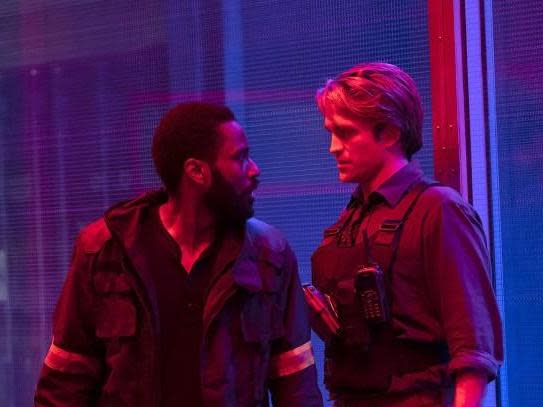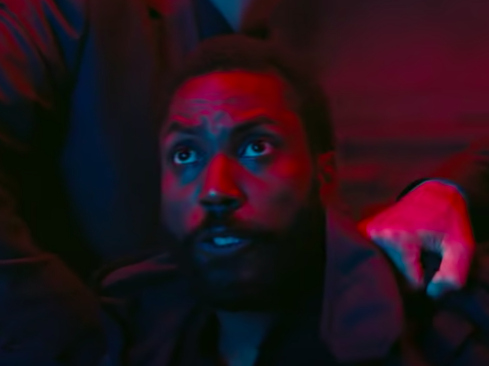Tenet: What is time inversion? The use of time travel in Christopher Nolan’s new film explained

Christopher Nolan’s new film Tenet has finally being released in several countries after a month-long delay.
The espionage thriller stars John David Washington as The Protagonist, a man who finds himself on a mission to save the world.
This being a Nolan film, it’s nowhere near as simple as that – Tenet (find out why it's called that here) comes submerged in the world of time travel in the form of something never before seen on-screen: time inversion.
Lose focus for one scene, and you might be left scrabbling to catch up. Fortunately, we’re on hand to fill you in on everything you might have missed, or clarify what you might not have understood.
*Warning – major spoilers for Tenet below*
The key thing to know about time travel in Tenet is that you are unable to jump to a specific point in time. If you want to travel back to 40 years ago, you have to live those 40 years in reverse.
How do you become inverted?
In the film’s world, there are portals used to become inverted in time, which are known as “turnstiles” – these are created at some point in the future. After going through them, you can move backwards in time from the point you entered. From this point, once you enter another one, you shall move forward from the point in time you have travelled back to, meaning two versions of the same person will exist simultaneously. Iy is imperative you do not meet – to do so, The Portagonist is told, would cause “annihilation”. Protective gear is worn in an attempt to prevent this from happening.
Tenet presents a number of these machines, with the majority of the action focusing on one vault in an art storage facility in Oslo, and another in a warehouse in Tallinn.

Inverted bullets
The reason why objects – including guns and bullets – can move backwards in present time is because these things have manually had their entropy reversed at some point in the future (entropy measurement is a way of distinguishing the past from the future).
Who reversed them?
It is suggested that Russian oligarch Sator (Kenneth Branagh) and his men have done so after inverting themselves through the turnstiles. One theory is that, when these people fired their weapons at different points in time, the bullets would remain there until “caught” by the weapon that fired them.
What is the Temporal Pincer Movement?
At one stage in the film, this term is mentioned by Ives, a soldier played by Aaron Taylor-Johnson. It is a tactic used by people who move through the turnstiles to help you receive knowledge you learned in the future – it’s how Sator has been devising his plan the entire time. Once the information has been learnt, the idea is to then invert yourself (so you’re travelling backwards), so you can brief either past self or someone else. This, in turn, creates a loop of information.
This occurs three times in the film – once when Sator threatens to shoot his wife Kat (Elizabeth Debicki) if The Protagonist doesn’t tell him where the plutonium is hidden, and again during the battle sequence involving the “red” and “blue” team.
The third time? For those who might have wandered here without watching the film first (which, again, we suggest you do), we’ll keep that a secret for now.

It is worth remembering throughout: “Blue” + oxygen masks = inverted / “Red” and no oxygen masks = not inverted (if inverted and outside, you you can’t breathe regular air).
Example one – the highway chase sequence
The turnstile in Tallinn has two sections, which are separated by a glass pane – one side is “blue” and depicts an inverted Sator, the other is “red” and depicts The Protagonist in the present. This means that Sator in the preceding highway sequence had been moving back in time after going through the turnstile (we know this, because he is wearing an oxygen mask). A few scenes later, The Protagonist goes through the same turnstiles and returns to this scene – he is now inverted. In fact, we learn he was the one behind the wheel of the car driving the opposite way in the previous highway sequence, so his past self and future self almost collided.
Example two – the “red” and “blue” team battle sequence
Here, the “blue” team invert themselves to go back in time so they can be filled in on the knowledge of what has already happened.
To do this, they go back 10 minutes so they can then fill in the non-inverted “red” team on what will happen.
It is this sequence that give the film's title it's meaning – more on that here.
Tenet, which features hidden references to some of Nolan's previous films, is in cinemas now
Read more
Tenet is Nolan’s most confusing film, but thrilling to get lost in
Is Tenet a sequel to Inception? Farfetched theory explained
From Avatar 2 to Mulan: Every delayed film and their new release date

 Yahoo Movies
Yahoo Movies 
